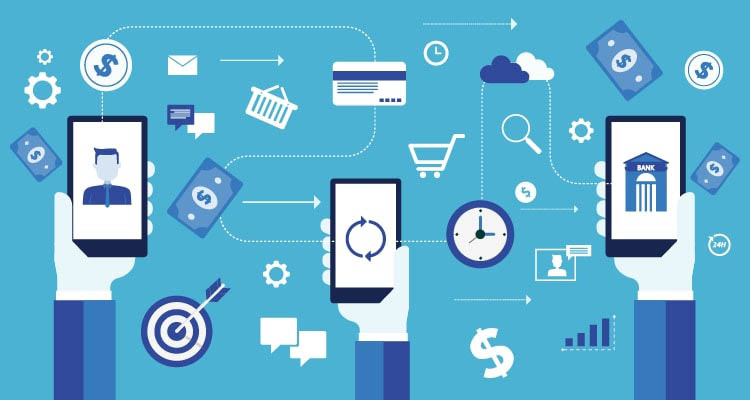Deepesh Rastogi
 2025-04-30 06:18:31
2025-04-30 06:18:31BLOG VIEWS : 1299
Creating a payment gateway architecture

-
Creating a payment gateway architecture involves designing a secure and efficient system that processes online transactions between customers and merchants. Here’s a high-level overview of the steps and considerations involved:
1. Understand Payment Processing Basics
- Payment Gateway vs. Payment Processor vs. Merchant Account: Understand the roles of these components. The payment gateway interfaces with the merchant’s website, the payment processor handles transaction processing, and the merchant account is where the funds are deposited.- Transaction Types: Familiarize yourself with different transaction types like authorization, capture, sale (authorization + capture), refund, and void.
2. Compliance and Security- PCI DSS Compliance: Ensure that your payment gateway adheres to the Payment Card Industry Data Security Standard (PCI DSS) to protect cardholder data.
- SSL/TLS Encryption: Use SSL/TLS encryption for securing data in transit between your payment gateway and all involved parties.
- Tokenization and Encryption: Implement tokenization and encryption to secure sensitive data at rest.
3. Choose the Right Technologies
- Programming Languages: Consider languages known for robust web development capabilities, like Java, Python, or C.- Database Management System: Choose a DBMS that offers reliability, scalability, and security, such as PostgreSQL, MySQL, or MongoDB.
- Cloud Services: Leverage cloud services for scalability, security, and reliability. AWS, Azure, and Google Cloud offer various services that can be beneficial.
4. Architecture Design
- Apache Kafka for Streaming: Use Apache Kafka to handle real-time data streaming, ensuring efficient processing of transactions and other events.
- APIs for Integration: Design RESTful APIs that allow merchants to easily integrate with your payment gateway. The APIs should handle different payment methods, transaction types, and error handling.
- Microservices Architecture: Consider using a microservices architecture to ensure scalability and ease of maintenance. Each component (e.g., transaction processing, fraud detection, and customer management) can be developed, deployed, and scaled independently.
5. Integrations
- UPI Integration: Integrate with the UPI platform to enable direct bank payments. This will require working with the National Payments Corporation of India (NPCI) and adhering to their protocols and security standards.
- Banking Interface: Create interfaces for integrating with banks, allowing transactions to flow between your gateway and the banks' systems.
- Digital Wallets Integration: Integrate with various digital wallets, understanding their APIs and ensuring secure data exchange.
- API Design: Design RESTful APIs or gRPC for internal and external communications. These APIs will be crucial for integrating with merchants, banks, and other financial institutions.
6. Scalability and Reliability
- Load Balancing: Use load balancers to distribute traffic evenly across your servers, ensuring high availability and reliability.- Scalable Kafka Clusters: Design your Kafka clusters to be scalable, handling increases in load gracefully. This includes partitioning topics effectively and ensuring brokers are distributed across different servers or data centers.
- Failover and Redundancy: Design your system with failover capabilities and redundancy to minimize downtime and data loss during outages.
- Data Replication: Ensure data is replicated across multiple databases and Kafka clusters for redundancy and failover capabilities.
7. Fraud Detection and Risk Management
- Real-time Analysis: Utilize Kafka Streams for real-time transaction analysis to detect and prevent fraudulent activities- Machine Learning: Implement machine learning algorithms to detect and prevent fraudulent transactions based on transaction patterns and historical data.
- Limit Checks and Alerts: Set up systems for real-time checks on transaction limits, suspicious activities, and other red flags to prevent fraud.
8. Testing and Deployment
- Unit and Integration Testing: Thoroughly test each component and its integration with other components to ensure the system works as expected.
- Performance Testing: Conduct performance testing to ensure the system can handle peak loads.
- Deployment Strategy: Plan a deployment strategy that minimizes downtime. Continuous integration and continuous deployment (CI/CD) practices can facilitate smoother updates.
- Automation of tasks with DevOps implementation
9. Regulatory and Legal Considerations- Local and International Regulations: Be aware of and comply with local and international payment processing regulations.
- Contracts and Agreements: Establish clear contracts and agreements with merchants, ensuring they understand the services, fees, and responsibilities involved.
10. Continuous Monitoring and Updates
- Monitoring: Implement real-time monitoring tools to track the system’s health, performance, and security.- Updates and Patches: Regularly update and patch the system to fix vulnerabilities, improve performance, and add new features.
Building a payment gateway requires a blend of technical expertise, strategic planning, and adherence to legal and security standards. Collaboration with cybersecurity experts, legal advisors, and experienced developers is crucial to navigate the complexities involved.
#PaymentGateway, #Fintech, #Ecommerce, #PCICompliance, #Security, #CloudComputing, #APIIntegration, #Microservices, #FraudPrevention, #MachineLearning, #DigitalPayments, #BankingTechnology, #FinancialInnovation, #Tech, #SoftwareDevelopment
- FinTech
- Technology
